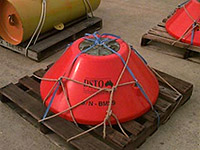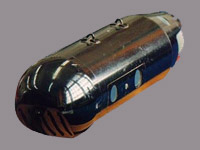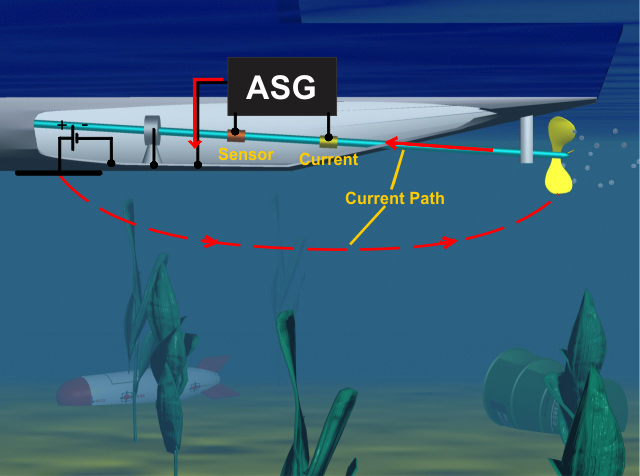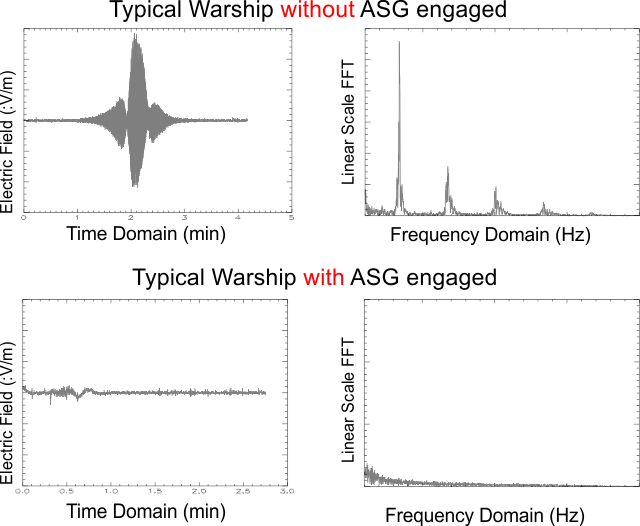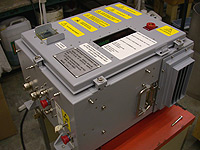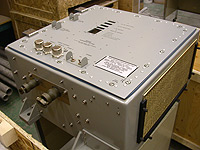The primary source of the vessel underwater electromagnetic field is the electric current that is produced by hull corrosion protection systems. These systems use either passive (zinc) anodes or active (powered) anodes to produce a current that flows into the hull where protective coatings have worn away. This current also flows onto and through the propeller shaft.
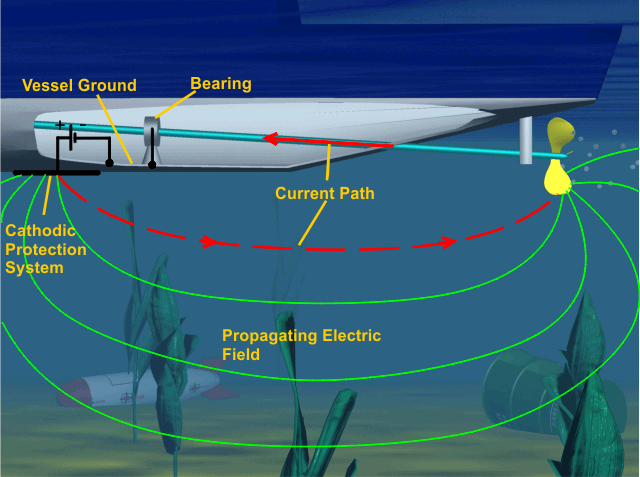
- ELFE field from Active Cathodic Protection
The electric potential between the anode and the cathode (the propeller or other bare metal) creates a Static Electric (SE) field (also known as Underwater Electric Potential or UEP). The magnitude of the field is proportional to the level of current flowing between the electrodes and the distance between them.
There is a current path from each anode to the propeller shaft, which then flows along the shaft before grounding to the hull through the shaft bearings. Current variability results from variations in bearing resistance as the shaft rotates and the electrical current becomes modulated at the frequency of the rotating shaft. An alternating current creates an electromagnetic field at the same frequency, which is at the shaft frequency and its harmonics. In the case of a rotating propeller shaft, this is termed the Extra Low Frequency Electromagnetic (ELFE) field. Additional components to the ELFE field can be contributed by the propeller blades. As the propeller turns, the distance from the propeller blade nearest the anode varies and the signal becomes modulated with the propeller blade passage frequency. Poorly filtered power supplies on ACP systems can also allow electrical "noise" to contribute to the signal, introducing onboard power frequencies into the ELFE field.
